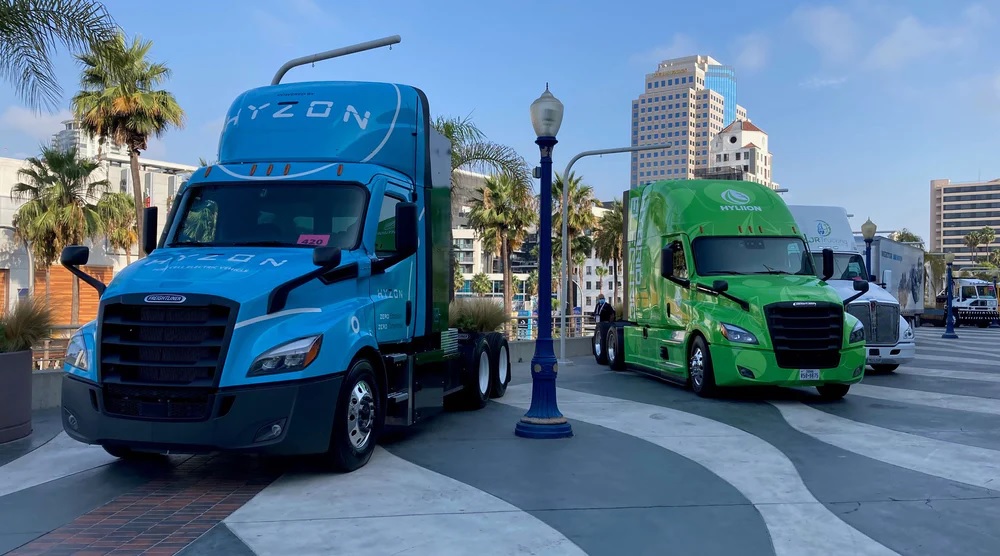The future of EVs is not one-size-fits-all, according to industry experts at ACT Expo 2021 in Long Beach. But the foundation for moving forward in the EV space will rely heavily on partnerships and planning ahead.
LONG BEACH, California — At the last in-person Advanced Clean Transportation Expo event in 2019, attendees wondered: Would electric trucks actually become a reality? Fast forward two years—and a global pandemic later.
Even amid the COVID-19 pandemic and all the challenges that come along with it, commercial electric vehicles seem to be ramping up in production. And as Michael Roeth, executive director of the North American Council for Freight Efficiency, pointed out during this year’s ACT Expo here in Long Beach, the industry is in the midst of the adoption curve of electric trucks. “It is not a matter of if, it’s when,” he said.
During an Aug. 30 battery-electric technology workshop, Ameya Jathar, senior director of engineering, Electric Vehicles, Meritor, explained that amid this adoption curve, hesitancies still loom, and fleets ask every day whether they should wait until the technology or time is right to electrify their vehicles.
“As fleets think about timing of technology, if you wait for the perfect time—it’s kind of like if you wait for the perfect time to have a baby, then no one will ever have a baby—there is no perfect time,” explained Mike Rowand, director, Engineering & Technical Services, eTransEnergy. “But there is that crawl, walk, run piece to it. Technology maturity is one thing. Ultimately, the technology part of this is the easiest, but there are a lot of operational questions, and vehicle spec questions as well.”
In today’s current environment, one of those operational questions is whether or not the supply chain is ready for electric trucks.
“Supply chain challenges are real,” noted Jathar. “We are specifically focusing on having that service network set up and ready. Challenges will come from what the supply chain will and will not release, and that is something that is happening at the global level. I don’t think our industry is unique from what any other industry is experiencing.”
Rowand added that it’s the supply chain on infrastructure as well. Because of longer lead times, he suggested that fleets map out their charging infrastructure plans well before their EV orders arrive.
The key, according to Meritor’s Jathar, is for fleets to start small and slow from each location or depot perspective. He suggested they begin electrifying vehicles first for their known short routes, and adding routes every few months as they develop charging infrastructure and understand the use case of their electric vehicles.
Investment and opportunity
The combination of regulatory efforts in California and other states, as well as various organizations’ zero-emission goals, has catapulted the market for clean fleet vehicles. Today, dozens of startups and upfitters join global OEMs to offer fleets more choices to propel EV growth.
During an Aug. 30 ACT Expo Investor Summit session, Thomas Healy, founder and CEO of Hyliion, pointed out that there are more than 20 special purpose acquisition companies (SPACs) in the market for electric vehicles. Excitement in the space really started to ramp up after Tesla announced the launch of its Class 8 electric truck.
Just last year, Hyliion, which provides Class 8 trucks with hybrid renewable natural gas and fully electric drivetrain architecture, announced its plans to go public via a merger with Tortoise Acquisition Corp., a publicly-traded SPAC.
Gary Horvat, VP of eMobility, Navistar, noted that although there is excitement around EVs, fleet interest today is beginning to pique because batteries are much less expensive than they used to be. “Total cost of ownership turns the dial to make an electric vehicle more beneficial than a diesel,” Horvat explained.
However, Ryan Cech, head of M&A for XL Fleet, said one of the biggest barriers to EV conversion is charging infrastructure.
“We hear from our fleet customers, ‘how do I charge, where do I charge, how much is it going to cost me? How much electricity do I need? Is my electricity bill going to spike,’” Cech explained. He added that the company’s XL Grid business was launched to help fleets solve those charging infrastructure problems.
When it comes to laying the foundation for the future and moving forward in the EV space, both startups and established OEMs are relying on partnerships and collaborations. Dan Tram, investment director, Volvo Group Venture Capital, said Volvo Group, through partnerships, mergers and acquisitions, and research and development, is able to help the needs of customers today and in the future.
“We talk to clients across different stages to understand what is going on and to pair what we know eternally with what we know internally as experts,” Tram said. “Where is the future going? It’s not one-size-fits-all.”
A challenge for established OEMs, Navistar’s Horvat noted, is combining the two worlds. Much of Navistar’s revenue today comes from service parts for diesel engines.
“So, how are you going to replace that when going to electric,” he said. “It’s a challenge because you basically have to do both and part of it is how do you do your lifecycle with your current product as opposed to finding the money to do the new stuff.
“It really takes a total company rowing the same way and knowing that if we don’t do that, we will be obsolete,” Horvat added. “You have to make the conscious investment to do that and use similar technology. When we create a new platform, we design it to make sure an EV can use it and a diesel can go down the same production line. We try to future-proof production so either can go, and then the transition is pretty easy. It’s smart manufacturing, smart implementation, and planning obsolescence so you don’t have all this huge investment that will be thrown away.”
Source: https://www.fleetowner.com/




